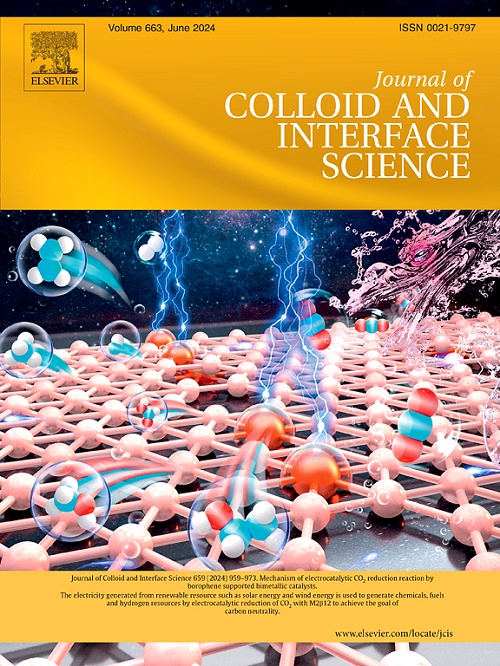探讨ZnIn2S4光催化降解四环素的失活与再生
IF 9.4
1区 化学
Q1 CHEMISTRY, PHYSICAL
引用次数: 0
摘要
ZnIn2S4(简称ZIS)由于其合适的带隙结构和良好的光吸收能力,在四环素降解中具有很大的潜力。但其严重的光腐蚀导致其光催化活性失活。在这项工作中,我们试图探索ZnIn2S4在光催化降解四环素中的失活和再生。EPR、XPS和PL结果表明ZIS的失活机制是由于Zn-S键断裂导致硫空位过多。选用Na2S作为再生剂后,第二次循环的降解率由57.4%提高到88.1%,第三次循环的降解率由30.3%提高到76.8%。对再生机理进行了从头算分子动力学模拟(AIMD)和密度泛函理论(DFT)计算。这些结果证实了Na2S水解产生的负电荷离子(HS -和OH -离子)被吸引到带正电荷的硫空位上,促进了Zn-S键的重键,从而缓解了过量的硫空位。本工作不仅对ZnIn2S4光腐蚀引起的性能失活进行了详细的讨论,而且对ZnIn2S4的再生机理也有了新的认识。本文章由计算机程序翻译,如有差异,请以英文原文为准。

Probing the deactivation and regeneration of ZnIn2S4 in photocatalytic degradation of tetracycline
ZnIn2S4 (noted as ZIS) has great potential in tetracycline degradation due to its suitable band gap structure and great light absorption capability. However, its serious photo-corrosion results in the deactivation of photocatalytic activity. In this work, we try our best to probe the deactivation and regeneration of ZnIn2S4 in photocatalytic degradation of tetracycline. EPR, XPS, and PL results reveal that the deactivation mechanism of ZIS is due to the breakage of Zn-S bonds which results in excessive sulfur vacancies. After choosing Na2S as regenerant, the degradation rate in second cycle increased from 57.4 % to 88.1 % and improved from 30.3 % to 76.8 % in third cycle. Ab initio molecular dynamics simulations (AIMD) and density functional theory (DFT) calculations are further conducted for the regeneration mechanism. These results confirm that the negatively charged ions (HS− and OH− ions) produced by hydrolysis of the Na2S are attracted to the positively charged sulfur vacancies, promoting the re-bonding of Zn-S bonds and thereby relieve excessive sulfur vacancies. This work not only provides a detailed discussion of performance deactivation caused by photo-corrosion of ZnIn2S4 but also offers new insights into the regeneration mechanism of ZnIn2S4.
求助全文
通过发布文献求助,成功后即可免费获取论文全文。
去求助
来源期刊
CiteScore
16.10
自引率
7.10%
发文量
2568
审稿时长
2 months
期刊介绍:
The Journal of Colloid and Interface Science publishes original research findings on the fundamental principles of colloid and interface science, as well as innovative applications in various fields. The criteria for publication include impact, quality, novelty, and originality.
Emphasis:
The journal emphasizes fundamental scientific innovation within the following categories:
A.Colloidal Materials and Nanomaterials
B.Soft Colloidal and Self-Assembly Systems
C.Adsorption, Catalysis, and Electrochemistry
D.Interfacial Processes, Capillarity, and Wetting
E.Biomaterials and Nanomedicine
F.Energy Conversion and Storage, and Environmental Technologies

 求助内容:
求助内容: 应助结果提醒方式:
应助结果提醒方式:


